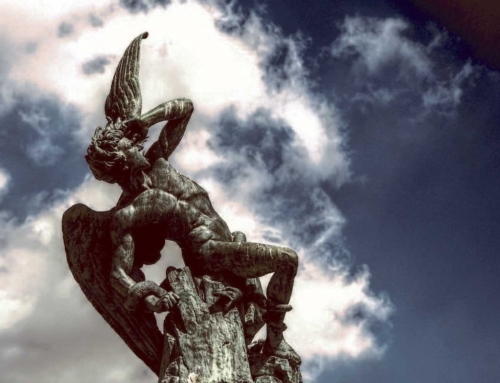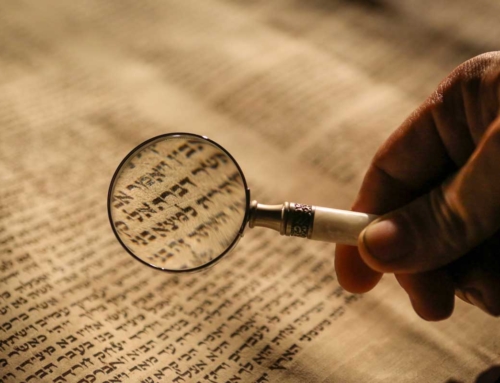This is part two of our adventure in learning to be discerning when dealing with differences between the Gospels. We’re considering one of the more challenging discrepancies that we find between John’s Gospel and the synoptic gospels (a term for Matthew, Mark, and Luke). The main question we are seeking to answer is: did Jesus die on the Passover or did he celebrate Passover the night before with his disciples.
All three Gospels agree that Jesus shared a private meal with his disciples in Jerusalem before his crucifixion. The synoptic gospels indicate that this meal was a Passover meal:
Now on the first day of Unleavened Bread the disciples came to Jesus, saying, “Where will you have us prepare for you to eat the Passover?” He said, “Go into the city to a certain man and say to him, ‘The Teacher says, My time is at hand. I will keep the Passover at your house with my disciples.’” And the disciples did as Jesus had directed them, and they prepared the Passover. (Matthew 26:17–19)
And the disciples set out and went to the city and found it just as he had told them, and they prepared the Passover. (Mark 14:16)
And when the hour came, he reclined at table, and the apostles with him. And he said to them, “I have earnestly desired to eat this Passover with you before I suffer. For I tell you I will not eat it until it is fulfilled in the kingdom of God.” (Luke 22:14–16)
John, on the other hand, places the Passover on the day of Christ’s crucifixion:
Then they [members of the Sanhedrin] led Jesus from the house of Caiaphas to the governor’s headquarters. It was early morning [Friday]. They themselves did not enter the governor’s headquarters, so that they would not be defiled, but could eat the Passover. (John 18:28)
Our central question is: Was Jesus crucified on the Day of Passover or the following day? One might, as many skeptical scholars have done, dismiss one or more of the biblical accounts as untrue. That, however, takes little imagination, little effort, and little regard for the truthfulness of the Scriptures. Might there be some other solution? In fact, a number of solutions have been proposed, which means we must decide on the most plausible explanation. For clarities’ sake, we only need to consider the most widely accepted theories.
THE DIFFERENT MEAL THEORY
Some have suggested that John is not describing the same meal as the other Gospel writers, and that the events recorded in John 13 occur on another night entirely (perhaps Tuesday or Wednesday evening). Certainly, the opening words found in John 13:1 are ambiguous enough to allow for this interpretation:
Now before the Feast of the Passover, when Jesus knew that his hour had come to depart out of this world to the Father, having loved his own who were in the world, he loved them to the end. During supper, when the devil had already put it into the heart of Judas Iscariot, Simon’s son, to betray him,Jesus, knowing that the Father had given all things into his hands, and that he had come from God and was going back to God, rose from supper. (John 13:1–4)
The phrase “before the Feast of Passover” could refer to a day or two before, and the “supper” mentioned in verses 2 and 4 could be some other evening meal. However, the disciples are said to be, “reclining at table,” a posture reserved for meals of special religious significance. At a regular meal, the men would have been sitting in chairs or on stools. Also, the events with Judas mirror those recorded by the other Gospel writers (Matthew, Mark, and Luke) during the Passover meal. Virtually all scholars hold that John and the synoptic writers are recording events from the same evening meal. The “Different Meal Theory” is a very unlikely solution.
THE UNOFFICIAL “PASSOVER” MEAL THEORY
The name I’ve given to this theory makes it pretty clear what the advocates of the view argue. Essentially, some scholars see the Thursday evening meal as a case of Jesus, anticipating his death, celebrating the Passover early. The problem of having a sacrificed lamb for the meal is solved by simply stating that they did not eat a lamb at all. These scholars point out that in none of the Gospel records is it explicitly stated that Jesus and the disciples ate a lamb at supper.
I find this particular theory to be intriguing because of its simplicity. However, it is difficult to understand in what sense the meal could have been considered a Passover meal without the sacrificial lamb. It is also difficult to believe that Jesus would depart form the Old Testament regulations by celebrating on a day not indicated by the Law and neglecting to follow the commands pertaining to the eating of a lamb at Passover.
Moreover, while the Gospel accounts do not mention the lamb during the meal, all the other evidence points to the procurement of a lamb by the disciples for this meal:
Then came the day of Unleavened Bread, on which the Passover lamb had to be sacrificed. So Jesus sent Peter and John, saying, “Go and prepare the Passover for us, that we may eat it.” (Luke 22:7–8)
This brings us back to our original problem. Were the lambs sacrificed on Thursday or Friday? If Thursday was the day “on which the Passover lamb had to be sacrificed,” we are not helped by a theory that avoids the use of a lamb at this Thursday evening meal.
THE QUMRAN CALENDAR THEORY
The remaining theories relate to how and when the Passover was celebrated by various groups in the first century. We will have to consider ancient calendars and the ways in which days were counted in the first century.
The Jewish religious landscape in Palestine was somewhat complicated during the lifetime of Jesus. In addition to the Pharisees and Sadducees, there were various fringe groups that often operated on the margins of society. One such group was the religious community located at Qumran. The famous Dead Sea Scrolls belonged this group and most of what we know about them stems from their writings which have been found among the Dead Sea Scrolls and other archeological discoveries. The acetic community apparently followed their own calendar. This calendar was a solar calendar, as opposed to the official Jewish calendar, which was lunar.
On the Qumran calendar, Nisan 14 (Passover) always fell on a Tuesday. Thus, those who hold to this view insist that Jesus ate a final Passover meal with his disciples on Tuesday, while the official Jewish calendar would have had the Passover as occurring on Friday.
As you can see, this is a more sophisticated version of the first theory. It pairs the idea of Jesus eating an unofficial Passover before the Friday Passover with the idea of him following the Qumran calendar. There are three reasons this solution will not work. First, it runs into the same problems as the first theory. Second, there is no evidence that Jesus followed the Qumran calendar (not an insurmountable problem, but worth mentioning). Third, in all likelihood, the Qumran calendar would have placed the Passover on a Tuesday sometime after the Passover celebration of the official calendar. This third objection certainly rules out the Qumran Calendar Theory.
DIFFERENT DAYS THEORY
Setting aside the possibility of the use of an entirely different calendar by Jesus and the Sadducees (who were in charge of the Temple), we need to consider whether Jesus and his disciples may have counted the days themselves differently than the Sadducees. On our clocks and calendars, we start a new day at midnight. However, this was not the case in first century Palestine (or in the ancient world generally).
A day was often counted as lasting from sunrise to sunrise. On the other hand, a day was sometimes counted as lasting from sunset to sunset. It has been proposed that the Galileans and Pharisees used the sunrise calendar. Thus for Jesus and the Pharisees, Passover would have begun on Thursday morning and ended on Friday morning. On the sunset reckoning, which we know the Sadducees and Judeans used, Nisan 14 would have begun on Friday evening and ended on Saturday evening. The differences may be illustrated as follows:
| Galilean and Pharisees’ Calendar | Nissan 14: | Last Supper | Nissan 15 | |
| Judean and Sadducees’ and Calendar | Lambs Slaughtered for Galileans | Nissan 14 | Crucifixion;
Lambs Slaughtered for Judeans |
Nissan 15 |
This explains John’s comment about the Sadducees not entering Pilate’s headquarters so that they could remain ritually clean for the Passover meal that evening:
Then they [the Sadducees] led Jesus from the house of Caiaphas to the governor’s headquarters. It was early morning [on Friday]. They themselves did not enter the governor’s headquarters, so that they would not be defiled, but could eat the Passover [Friday evening]. (John 18:28)
Jesus disciples, on the other hand, may have celebrated the Passover on Thursday evening, having reckoned Nisan 14 to have begun at sunrise.
There is some evidence that the Pharisees (and perhaps Galileans) counted days from sunrise to sunrise, and we know that the Sadducees reckoned from sunset to sunset. The greatest weakness of this view lies in the fact that it requires the priests to have slaughtered lambs for the Galileans and/or Pharisees on Thursday and for themselves and other Judeans on Friday. We don’t have any evidence that Passover lambs were slaughtered on two consecutive days. However, given the fact that it may have been impossible for the priests to slaughter enough lambs in one day for all those coming to Jerusalem at Passover, we have reasons for thinking some arrangement like this may have existed. In our search for the most plausible view, this Different Days Theory seems to be the winner.
CONCLUSION
Of course, the solution may lay in some undiscovered piece of evidence that may point in another direction. What we need to take notice of, however, is the fact that more than one plausible solution exists aside from dismissing one or more Gospel accounts as inaccurate. We don’t have to have definitive answers for every challenge to the truthfulness of Scripture. We need plausible answers. We need to be willing to think critically and do our research if we want to answer skeptics.
Of course, not every supposed contradiction between the Gospels is this complex. We are not wrong if we trust in the authority of Scripture without being able to answer these more difficult questions. Every believer does not have access to the resources to necessary to conduct this kind of research (I’ve not discussed every detail or given every source). We can be thankful that God calls some of his people to devote their lives to studying the Scriptures in more depth and researching such difficult issues. The church’s teachers are a gift to the church. We can be sure, with our without definitive answers, that the Bible stands up to the most rigorous scrutiny. Deeper study and greater research are a help to understand Scripture rather than a threat biblical Christianity.




